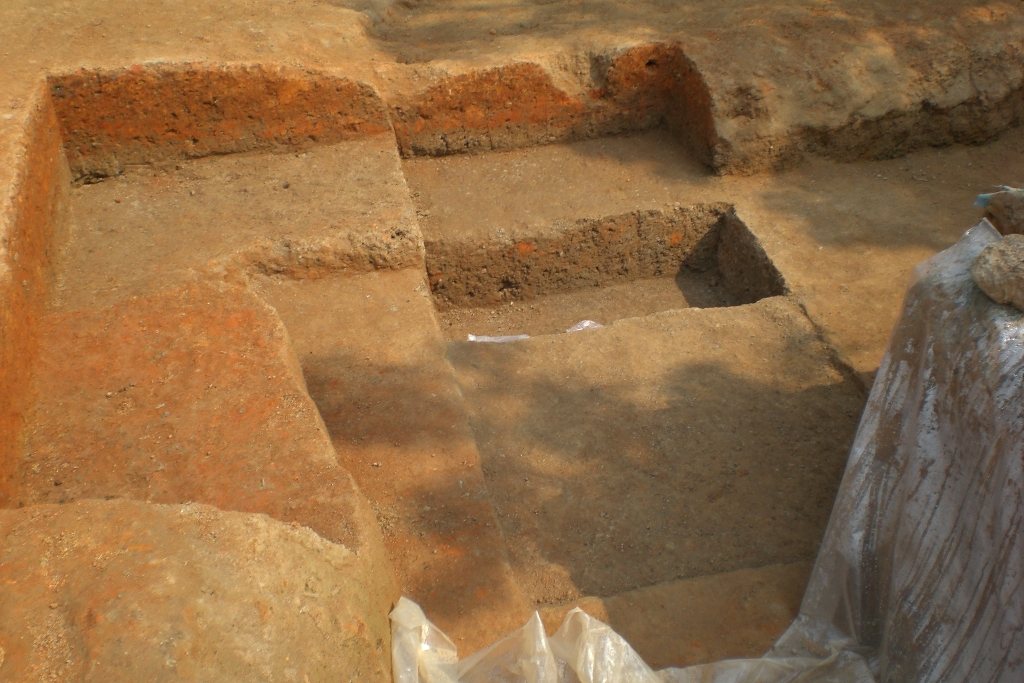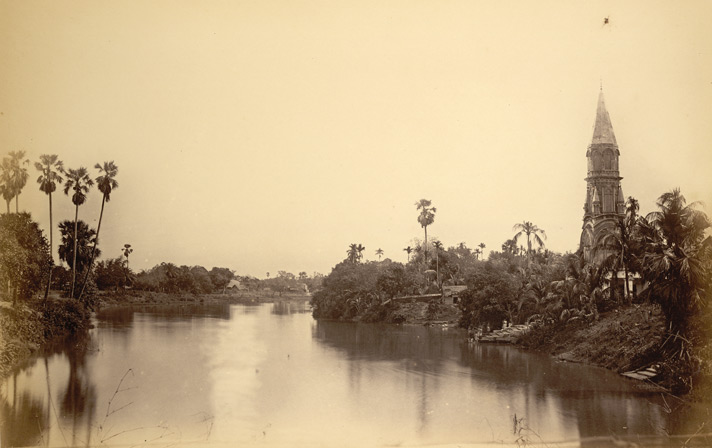|
Ghaseti Begum
Mehar un-Nisa Begum ( fa, ), better known as Ghaseti Begum ( bn, ঘসেটি বেগম, Ghôśeṭi Begôm), was the eldest daughter of Alivardi Khan, Nawab of Bengal, Bihar and Orissa during 1740–1758. Early life Ghaseti Begum was the eldest daughter of Nawab Alivardi Khan, the Nawab of Bengal, and Princess Sharfunnisa, the paternal aunt of Mir Jafar. Her paternal grandfather was Mirza Muhammad Madani, who was of either Arab or Turkic descent, the son of a foster-brother of the Mughal emperor Aurangzeb. Her paternal grandmother belonged to the Turkic Afshar tribe of Khorasan. Through her, she was a relative of Shuja-ud-Din Muhammad Khan, the two having shared a common ancestor in Nawab Aqil Khan. Ghaseti Begum married her paternal cousin, Nawazish Muhammad Khan, who was the Naib Nazim of Dhaka. Being childless, the couple adopted Ikram ud-Daulah, the son of her younger sister Amina Begum. But Ikram ud-Daulah died of smallpox at a young age. Soon after Nawazish Muham ... [...More Info...] [...Related Items...] OR: [Wikipedia] [Google] [Baidu] |
Alivardi Khan
Alivardi Khan (1671 – 9 April 1756) was the Nawab of Bengal from 1740 to 1756. He toppled the Nasiri dynasty of Nawabs by defeating Sarfaraz Khan in 1740 and assumed power himself. During much of his reign Alivardi encountered frequent Maratha raids under Raghuji Bhonsle, culminating in the surrender of the province of Orissa in a peace settlement in 1751. He also faced separatist rebellions in Bihar as well as a revolt from his grandson Siraj ud-Daulah, though these were suppressed. Alivardi spent the latter part of his reign rebuilding Bengal. He was a patron of the arts and resumed the policies of Murshid Quli Khan. He maintained a politically neutral stance with the European powers in the subcontinent and prevented any infighting amongst them in his dominions. He was succeeded by Siraj ud-Daulah in 1756. Early life Born in one of the cities of the Deccan in 1676, he was originally given the name Mirza Muhammad Ali. His father Mirza Muhammad Madani, who was of either Ar ... [...More Info...] [...Related Items...] OR: [Wikipedia] [Google] [Baidu] |
Indian Shia Muslims
Indian or Indians may refer to: Peoples South Asia * Indian people, people of Indian nationality, or people who have an Indian ancestor ** Non-resident Indian, a citizen of India who has temporarily emigrated to another country * South Asian ethnic groups, referring to people of the Indian subcontinent, as well as the greater South Asia region prior to the 1947 partition of India * Anglo-Indians, people with mixed Indian and British ancestry, or people of British descent born or living in the Indian subcontinent * East Indians, a Christian community in India Europe * British Indians, British people of Indian origin The Americas * Indo-Canadians, Canadian people of Indian origin * Indian Americans, American people of Indian origin * Indigenous peoples of the Americas, the pre-Columbian inhabitants of the Americas and their descendants ** Plains Indians, the common name for the Native Americans who lived on the Great Plains of North America ** Native Americans in the Uni ... [...More Info...] [...Related Items...] OR: [Wikipedia] [Google] [Baidu] |
History Of India
According to consensus in modern genetics, anatomically modern humans first arrived on the Indian subcontinent from Africa between 73,000 and 55,000 years ago. Quote: "Y-Chromosome and Mt-DNA data support the colonization of South Asia by modern humans originating in Africa. ... Coalescence dates for most non-European populations average to between 73–55 ka." However, the earliest known human remains in South Asia date to 30,000 years ago. Settled life, which involves the transition from foraging to farming and pastoralism, began in South Asia around 7000 BCE. At the site of Mehrgarh presence can be documented of the domestication of wheat and barley, rapidly followed by that of goats, sheep, and cattle. By 4500 BCE, settled life had spread more widely, and began to gradually evolve into the Indus Valley civilisation, an early civilisation of the Old World, which was contemporaneous with Ancient Egypt and Mesopotamia. This civilisation flourished between 2500 BCE and 1900 ... [...More Info...] [...Related Items...] OR: [Wikipedia] [Google] [Baidu] |
History Of Bangladesh
Civilisational history of Bangladesh previously known as East Bengal, dates back over four millennia, to the Chalcolithic. The country's early documented history featured successions of Hindu and Buddhist kingdoms and empires, vying for regional dominance. Islam arrived during the 6th-7th century AD and became dominant gradually since the early 13th century with the conquests led by Bakhtiyar Khalji as well as activities of Sunni missionaries such as Shah Jalal in the region. Later, Muslim rulers initiated the preaching of Islam by building mosques. From the 14th century onward, it was ruled by the Bengal Sultanate, founded by king Shamsuddin Ilyas Shah, beginning a period of the country's economic prosperity and military dominance over the regional empires, which was referred by the Europeans as the richest country to trade with. Afterwards, the region came under the Mughal Empire, as its wealthiest province. Bengal Subah generated almost half of the empire's GDP and 12% of ... [...More Info...] [...Related Items...] OR: [Wikipedia] [Google] [Baidu] |
History Of Bengal
The history of Bengal is intertwined with the history of the broader Indian subcontinent and the surrounding regions of South Asia and Southeast Asia. It includes modern-day Bangladesh and the Indian states of West Bengal and Assam's Karimganj district, located in the eastern part of the Indian subcontinent, at the apex of the Bay of Bengal and dominated by the fertile Ganges delta. The region was known to the ancient Greeks and Romans as ''Gangaridai'', a powerful kingdom whose war elephant forces led the withdrawal of Alexander the Great from India. Some historians have identified Gangaridai with other parts of India. The Ganges and the Brahmaputra rivers act as a geographic marker of the region, but also connects the region to the broader Indian subcontinent. Bengal, at times, has played an important role in the history of the Indian subcontinent. The area's early history featured a succession of Indian empires, internal squabbling, and a tussle between Hinduism and Buddhi ... [...More Info...] [...Related Items...] OR: [Wikipedia] [Google] [Baidu] |
Nawabs Of Bengal
The Nawab of Bengal ( bn, বাংলার নবাব) was the hereditary ruler of Bengal Subah in Mughal India. In the early 18th-century, the Nawab of Bengal was the ''de facto'' independent ruler of the three regions of Bengal, Bihar, and Orissa which constitute the modern-day sovereign country of Bangladesh and the Indian states of West Bengal, Bihar and Orissa. They are often referred to as the Nawab of Bengal, Bihar and Orissa ( bn, বাংলা, বিহার ও উড়িষ্যার নবাব). The Nawabs were based in Murshidabad which was centrally located within Bengal, Bihar, and Odisha. Their chief, a former prime minister, became the first Nawab. The Nawabs continued to issue coins in the name of the Mughal Emperor, but for all practical purposes, the Nawabs governed as independent monarchs. Bengal continued to contribute the largest share of funds to the imperial treasury in Delhi. The Nawabs, backed by bankers such as the Jagat Seth, became th ... [...More Info...] [...Related Items...] OR: [Wikipedia] [Google] [Baidu] |
Buriganga River
The Buriganga River ( bn, বুড়িগঙ্গা, ''Buŗigônga'', ) is a river in Bangladesh which flows past the southwest outskirts of the capital city, Dhaka. Its average depth is and its maximum depth is . It ranks among the most polluted rivers in the country. Dhaleshwari River According to R. C. Majumdar, in the distant past, it is probable that a course of the Ganges river used to reach the Bay of Bengal through the Dhaleshwari River. The Buriganga originated from the Dhaleshwari in the south of Savar, near Dhaka In the 20th century the water table and river became polluted by polythenes and other hazardous substances from demolished buildings near the river banks. Pollution The Buriganga is economically very important to Dhaka. Launches and country boats provide connection to other parts of Bangladesh, a largely riverine country. When the Mughals made Dhaka their capital in 1610, the banks of the Buriganga were already a prime location for trade. The rive ... [...More Info...] [...Related Items...] OR: [Wikipedia] [Google] [Baidu] |
Murshidabad
Murshidabad fa, مرشد آباد (, or ) is a historical city in the Indian state of West Bengal. It is located on the eastern bank of the Bhagirathi River, a distributary of the Ganges. It forms part of the Murshidabad district. During the 18th century, Murshidabad was a prosperous city. It was the capital of the Bengal Subah in the Mughal Empire for seventy years, with a jurisdiction covering modern-day Bangladesh and the Indian states of West Bengal, Bihar and Orissa. It was the seat of the hereditary Nawab of Bengal and the state's treasury, revenue office and judiciary. Bengal was the richest Mughal province. Murshidabad was a cosmopolitan city. Its population peaked at 10,000 in the 1750s. It was home to wealthy banking and merchant families from different parts of the Indian subcontinent and wider Eurasia, including the Jagat Seth and Armenians. European companies, including the British East India Company, the French East India Company, the Dutch East India Compa ... [...More Info...] [...Related Items...] OR: [Wikipedia] [Google] [Baidu] |
Jinjira Palace
Jinjira Palace ( bn, জিঞ্জিরা প্রাসাদ), also spelt Zinzira Palace, is a late 17th century Mughal architecture, Mughal-era palace in Keraniganj Upazila, Keraniganj, Bangladesh on the southern banks of the Old Ganges or Buriganga River. It was built by Ibrahim Khan II, Bengal's last Subahdar, ''subedar'' (provincial governor) before Aurangzeb's grandson Azim-ush-Shan took control of the region, as his recreation resort opposing the Bara Katra in the Chowk Bazaar, Chowk Bazar neighborhood of Old Dhaka on the other side of the river. The palace is known for the tragic imprisonment of the female members of the Nawabs of Bengal and Murshidabad, Bengal Nawab family following the Battle of Plassey (1757). Etymology The name ''jinjira'', after which the neighborhood is also named, is a variant of ''janjīrā'', a corruption (as occurring in other Indo-Aryan languages, Indo-Aryan languages such as Marathi language, Marathi, e.g. Murud-Janjira) of the Arabic wor ... [...More Info...] [...Related Items...] OR: [Wikipedia] [Google] [Baidu] |
Battle Of Plassey
The Battle of Plassey was a decisive victory of the British East India Company over the Nawab of Bengal and his French allies on 23 June 1757, under the leadership of Robert Clive. The victory was made possible by the defection of Mir Jafar, who was Nawab Siraj-ud-Daulah's commander in chief. The battle helped the British East India Company take control of Bengal. Over the next hundred years, they seized control of most of the rest of the Indian subcontinent, including Burma. The battle took place at Palashi (Anglicised version: ''Plassey'') on the banks of the Hooghly River, about north of Calcutta (now Kolkata) and south of Murshidabad in West Bengal, then capital of Bengal Subah (now in Nadia district in West Bengal). The belligerents were the Nawab Siraj-ud-Daulah, the last independent Nawab of Bengal , and the British East India Company. He succeeded Alivardi Khan (his maternal grandfather). Siraj-ud-Daulah had become the Nawab of Bengal the year before, and he had order ... [...More Info...] [...Related Items...] OR: [Wikipedia] [Google] [Baidu] |


.png)

.png)



